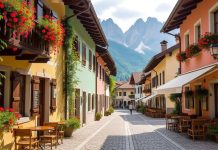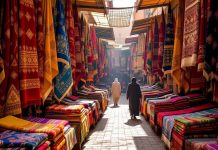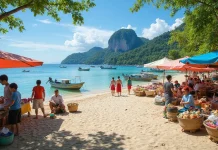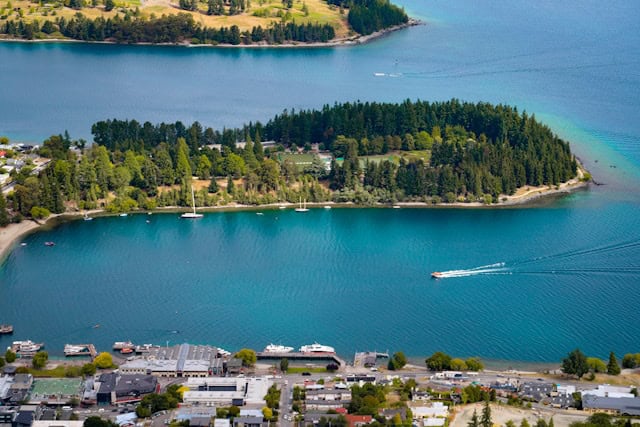The Revival of the Silk Road in Contemporary Context
The Silk Road, a series of interconnected trade routes that historically linked the East with the West, is experiencing a renaissance in modern times. This revival is not merely a historical reenactment but a strategic geopolitical and economic effort that is reshaping global trade and cultural exchanges. Anchored by China's Belt and Road Initiative (BRI), the Silk Road in the twenty-first century is a blend of bustling modern infrastructure projects and digital connectivity that echoes its ancient vibrance of cultural exchange, not merely trade.
The Ancient Silk Road Legacy
To understand the contemporary Silk Road, it is crucial to delve into its historical roots. The Silk Road originated during the Han Dynasty in China (206 BCE – 220 CE) and served as the primary conduit for trade and cultural exchange between diverse civilizations such as Chinese, Indian, Persian, Arab, and Roman. Precious commodities like silk, spices, and gold traversed these routes, facilitated by camel caravans crossing deserts and mountains, creating an intricate web of trade and diplomatic relations across continents. However, the Silk Road was more than a trade route; it was a cultural catalyst that fostered an unparalleled exchange of ideas, technologies, and religions.
Trade, Religion, and Empire
The ancient Silk Road not only facilitated economic exchange but also served as a channel for spreading religious ideologies such as Buddhism, Christianity, and Islam. Missionaries and pilgrims moved along these routes, planting religious seeds that would grow across regions. Empires expanded and contracted, their borders influenced by the trade wealth garnered through these networks, showcasing a world interconnected far earlier than globalization may assume.
Modern Civilization Meets the Silk Road
The ancient Silk Road may have faded into history with the rise of maritime trade and political upheaval, but its legacy was never entirely forgotten. Today, reviving the Silk Road has implications that transcend mere nostalgia; it is a movement driven by geopolitical, economic, and technological advancements.
The Belt and Road Initiative: A Modern Silk Road
Launched in 2013, China’s Belt and Road Initiative aims to resurrect the Silk Road through massive infrastructure investments and trade agreements across Asia, Europe, and Africa. This ambitious strategy includes building railways, highways, and sea routes, creating a vast network of interconnected trade routes akin to its ancient predecessor. This initiative is tagged as the largest infrastructure project in human history, aiming to enhance regional connectivity and economic collaboration.
Impact on Global Trade
The revamped Silk Road significantly impacts global trade patterns. By improving transportation infrastructure, the BRI reduces transportation costs and delivery times, opening markets for developing countries with limited access to lucrative trade routes. Enhanced connectivity promises new growth prospects for landlocked regions traditionally marginalized in global commerce. Critics, however, raise concerns about debt sustainability and financial dependence of countries participating in BRI projects, encapsulated in the phrase “debt-trap diplomacy.”
Cultural Exchange and Digital Connectivity
Beyond economic benefits, the modern Silk Road facilitates significant cultural and technological exchanges. The proliferation of digital highways is equally important as physical ones. Telecommunications networks, e-commerce platforms, and digital services are enhancing connectivity across borders. People-to-people exchange programs, tourism, and academic collaborations are reigniting cultural ties once cultivated along the Silk Road.
Cross-Cultural Collaboration
The BRI includes initiatives designed to foster cultural understanding and education, recognizing that mutual respect and cultural awareness are pivotal to enduring international relationships. Collaborative educational and cultural exchange programs have been launched to encourage deeper connections and learning experiences among diverse international communities connected by the BRI.
Challenges and Opportunities of the Modern Silk Road
The reimagined Silk Road, while visionary, is not without its challenges. Political tensions, economic disparities, and environmental concerns are hurdles that stakeholders must navigate for the modern Silk Road to reach its full potential.
Geopolitical Dynamics
The modern Silk Road serves as a geopolitical chessboard, where Chinese influence is growing in regions traditionally dominated by Western powers. This shift presents a strategic challenge, igniting debates about geopolitical power dynamics and the influence sphere shifting eastward. Local governments must balance the opportunities presented by investments with maintaining sovereignty and preventing overreliance on Chinese funding and technology.
Regional Cooperation and Conflict
While the BRI encourages regional cooperation, it simultaneously risks stoking regional tensions. Border disputes, contentious political relations, and differing national agendas sometimes mask over extended collaborations. The initiative demands nuanced diplomacy, which, if mismanaged, can turn infrastructural opportunities into geopolitical friction zones.
Environmental Considerations
Rapid infrastructure development along the modern Silk Road raises concerns about environmental degradation. Dam construction, deforestation, and increased carbon emissions pose long-term environmental threats. Recognizing these environmental imperatives, sustainable and eco-friendly practices must be integrated into the planning and execution stages of infrastructure projects, ensuring that economic progress does not come at the planet's expense.
Sustainable Development Goals
The merging of economic development with sustainability outlines the intricate challenge: implementing the BRI while aligning it with global Sustainable Development Goals. This task is daunting, as aligning diverse national economic interests with environmental consciousness requires diligent planning, cross-border cooperation, and transparent governance frameworks that prioritize environmental stewardship.
Reimagining the Legacy: The Silk Road Crafting Modern Myths
The Silk Road captures imaginations as much for its historical legends as for its modern implementations. Reviving this ancient trade route in the twenty-first century is as much an ideological endeavor as it is an economic one. It challenges how civilizations perceive connectivity, cooperation, and cultural dialogue in an increasingly interdependent world.
The Human Element
At the heart of the Silk Road’s rejuvenation lies the human element—community, culture, and heritage. This human-centric approach recognizes the importance of crafting a shared narrative that resonates globally. The modern Silk Road must retain the ethos of its ancestor, promoting inclusivity and deeper human connections while pioneering cutting-edge economic advancements.
Creating a Global Dialogue
Cultural festivals, art exhibitions, and international conferences along the Silk Road are becoming more prevalent, serving as melting pots between ancient traditions and modern innovations. These gatherings foster global dialogue, celebrating diversity and encouraging a narrative of unity in an age often marked by division.
The Silk Road in Literature and Arts
The Silk Road continues to inspire artists, writers, and historians. This artistic endeavor is reflected in countless literary works, artworks, and media productions seeking to capture, interpret, and narrate the Silk Road’s historical essence and its contemporary reimagining. The Silk Road is a muse, infusing modern creativity with historical depth.
Night Markets and New Narratives
Spiritual successors to ancient caravanserais, vibrant night markets often become microcosms of global culture, selling goods and delicacies alongside modern inventions. They embody the narrative of old meeting new and cater to the contemporary cosmopolitan palate while echoing the bustling ambiance of historic trade hubs.
The Silk Road and Technological Innovations
Amidst the tapestry of historically inspired modern initiatives, cutting-edge technology plays a pivotal role, seamlessly integrating historic routes into the twenty-first century. Emerging technologies and digital platforms redefine how the modern Silk Road operates, ushering in an era of profound technological transformations.
Digital Silk Road
The Digital Silk Road is a crucial component of the BRI, focusing on information technology, the internet, and digital infrastructure. This digital angle enhances cross-border telecommunications, data centers, e-commerce, and artificial intelligence adoption in participating countries, transforming traditional commerce into a future-ready enterprise.
Blockchain and Trade Facilitation
Deploying blockchain technology along the Silk Road introduces transparency and efficiency in trade practices. Supply chain management becomes streamlined and secure, mitigating risks associated with corruption, fraud, and inefficiencies, thereby fostering a trusted trading environment vital for international cooperation.
Smart Cities and Urban Renaissance
In concert with the BRI, urban development along the Silk Road is leading to an urban renaissance powered by smart city initiatives. These projects leverage IoT, AI, and sustainable energy to create modern urban environments brimming with economic vitality while preserving ecological balance and enhancing quality of life.
Technology-Driven Urban Planning
Integrating technology into urban planning aligns heritage with innovation, crafting cities that embody historical significance while championing modern living. Smart infrastructure, efficient public transport, and green spaces cater to city dwellers while preserving cultural legacies integral to the human experience along the Silk Road.
Challenges of Political Representation Along the Silk Road
The intricate network of roads composing the modern Silk Road traverses diverse political spectrums, each posing distinctive challenges and opportunities regarding governance, representation, and diplomacy.
Diplomatic Challenges and Opportunities
Diplomatic engagement remains a cornerstone of the Silk Road's sustainability and success. Countries participate in multilateral dialogues addressing mutual interests and conflicts in navigating economic disparities, border tensions, and governance issues inherent in a multi-national framework like the BRI.
The Role of International Organizations
International organizations such as the United Nations and World Trade Organization can facilitate dialogue, providing platforms for dispute resolution and policy formulation. Their involvement can enhance the credibility of the BRI while aligning its ambitions with broader international norms and ethical standards.
Policy Implications and Economic Models
The modern Silk Road’s progression necessitates nuanced policy considerations, both regionally and globally. Harmonizing diverse economic models requires collaborative policy frameworks offering transparency and equitable benefits for participating nations.
Policy Transformation and Economic Integration
Reforming regulatory environments, harmonizing tariffs, and adopting standardized industry practices contribute to lowering trade barriers and facilitating the seamless movement of goods and services across national borders, embodying the Silk Road ethos of integration.
The Silk Road and Environmental Sustainability
The modern Silk Road faces increasing pressure to align ambitious economic goals with sustainability efforts, ensuring that growth does not compromise environmental integrity.
Greening the Silk Road
The pursuit of green infrastructure projects along the Silk Road aims to address environmental concerns proactively. Utilizing renewable energy, reducing carbon footprints, and sustainable land use practices align environmental stewardship with economic development, crafting a green narrative for future generations.
Innovation in Sustainable Transportation
Transportation is central to the Silk Road, with eco-friendly initiatives promoting low-emission vehicles, electric railways, and sustainable maritime practices reflecting the new era of trade that prioritizes environmental responsibility. These measures mitigate climate change effects contributing to global environmental resilience.
Balancing Progress with Conservation
Preserving natural landscapes while pursuing infrastructural progress is an intricate balancing act for stakeholders along the modern Silk Road. Environmental impact assessments, conservation projects, and ecological tourism initiatives ensure that natural wonders coexist harmoniously with human development.
Conservation through Cultural Heritage
The Silk Road is not merely a pathway for goods and services but also a cultural heritage corridor. Crafting policies that encompass cultural conservation alongside environmental preservation preserves the essence of human creativity and ecological diversity that has historically defined the Silk Road.































